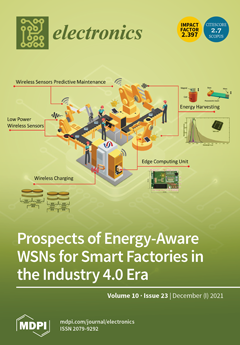For technological, economic, and environmental reasons, renewable distributed generators (RDGs) have been extensively used in distribution networks. This paper presents an effective approach for technoeconomic analysis of optimal allocation of REDGs considering the uncertainties of the system. The primary issue with renewable-based distributed
[...] Read more.
For technological, economic, and environmental reasons, renewable distributed generators (RDGs) have been extensively used in distribution networks. This paper presents an effective approach for technoeconomic analysis of optimal allocation of REDGs considering the uncertainties of the system. The primary issue with renewable-based distributed generators, especially wind and photovoltaic systems, is their intermittent characteristic that results in fluctuating output power and, hence, increasing power system uncertainty. Thus, it is essential to consider the uncertainty of such resources while selecting their optimal allocation within the grid. The main contribution of this study is to figure out the optimal size and location for RDGs in radial distribution systems while considering the uncertainty of load demand and RDG output power. A Monte Carlo simulation approach and a backward reduction algorithm were used to generate a reasonable number of scenarios to reflect the uncertainties of loading and RDG output power. Manta ray foraging optimization (MRFO), an efficient technique, was used to estimate the ratings and placements of the RDGs for a multi-objective function that includes the minimization of the expected total cost, total emissions, and total system voltage deviation, in addition to enhancing predicted total voltage stability. An IEEE 118-bus network was used as a large interconnected network, along with a rural 51-bus distribution grid and the IEEE 15-bus model as a small distribution network to test the developed technique. Simulations demonstrate that the proposed optimization technique effectively addresses the optimal DG allocation problem. Furthermore, the results indicate that using the proposed method to optimally integrate wind turbines with solar-based DG decreases the expected costs, emissions, and voltage deviations while improving voltage stability by 40.27%, 62.6%, 29.33%, and 4.76%, respectively, for the IEEE 118-bus system and enhances the same parameters by 35.57%, 59.92%, 68.95%, and 11.88%, respectively, for the rural 51-bus system and by 37.74%, 61.46%, 58.39%, and 8.86%, respectively, for the 15-bus system.
Full article





